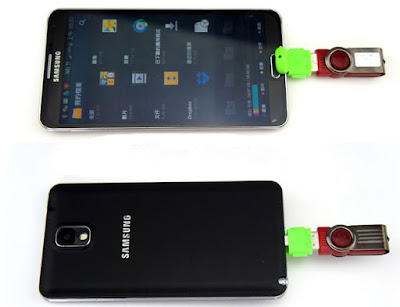I've seen there is a USB OTG equipped mobile phone but I have also never seen a mobile phone specification only support USB Host. Many explanations on the internet that are not yet clear, coincidentally my cell phone had only support USB Host and USB OTG support tablet. So what is the difference from these features?
Answer:
Host mode allows the smartphone device acts as the "master of the House" and to control other devices (peripherals) are often referred to as a slave. Usually, host this mode, previously only commonly owned by PCs.
Since the Android OS 3.1 (Honeycomb), the Android smartphone is already equipped the ability of host mode. Should the device supports USB OTG (On The Go), means already support hosted mode, and most likely the opposite applies.
But indeed on some specific device, though already support hosted mode, it does not support USB OTG. This can be caused by several things, including the OS kernel and drivers, who are not yet complete or perfect running on the device.
Some device google Nexus also had experienced it, and new running when using additional applications or when you update the OS.
To check if device we support OTG, many applications in Google's Play that could help, such as Easy OTG Checker, USB Host, USB OTG Check Checker, and others.
The easiest way of course if we have the OTG, such as Flash with a micro USB port. There is a device that automatically detects another device connected to the port, there are devices we have to activate it first OTG feature in the settings.
If we support OTG device, many other devices can be connected, not just Flash, for example, keyboard, portable hard disk, mouse, Infra-Red scanners, gamepad, etc.





![How to Get Freya in Mobile Legends [Easy] How to Get Freya in Mobile Legends [Easy]](https://blogger.googleusercontent.com/img/b/R29vZ2xl/AVvXsEi9Rq3cpg8rvYZzw7ataPxv_A46qfnHhhXwjKZL4ju-nOAcwCx6kiG-qN8ms1kYtUaYKJz0Gbx1NXbQCnW8f2_HZbw0vpUxTFukhfeHQpTy4UwBwsvGbvA5-M9n_yrkce7_r07LsJiaFxo/s72-c/ml-freya.jpeg)



EmoticonEmoticon